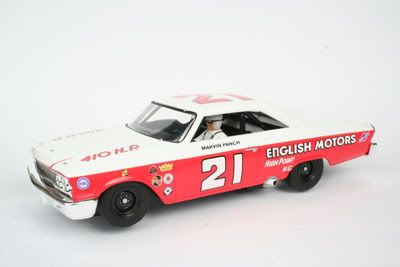
Revell 85-4891 is scheduled to ship from Revell 6/27/08
Slot car news, photos from all slot car manufacturers.
HISTORYSCX seems to be on a roll as far as releasing some cool rally cars from the 70’s. The appeal to me is that a lot of these same cars also took part in road racing series back then as well. A good example of this is SCX’s retro/cool Alpine A110. It’s 1:1 counterpart was a LeMans competitor as well as rally car. The latest release in the SCX Classics Series brings us the SEAT 131 Abarth (Ref. #62970). The 1:1 scale SEAT 131 was a Spanish re-badged twin of the Fiat 131. The 131 Abarth would go on to win 3 World Rally Championships (WRC) in 1977, 1978, and 1980. How this car would go from its humble roots as a 3 box family sedan to world beater on the international rallying scene is an interesting story.
The oil crisis of the 70’s set the stage for a series of events taking place in Italy: Fiat had a newly formed rally team, and had recently acquired tuning specialist Abarth. Some of Fiat’s marketing gurus could see the halo effect the Stratos rally cars had for Lancia, and wanted Abarth to do something similar for Fiat with a performance model of their own. Abarth’s mandate was to find a rally car suitable to replace the outgoing 124 (also the subject of an SCX model) that had to be as fast as the Stratos. Several prototypes were developed including the 124, X1/9, and 131.
By 1976 the Stratos had won it’s third consecutive WRC championship. Ford was coming on strong with its own rally program. Abarth had been using the 131 as a test mule for the X1/9 program. The 131 was ideal for this role since it had a spacious engine bay, roomy interior, and rear wheel drive. This allowed engineers to explore a variety of motor and driveline options. For a time it looked like the X1/9 would be the car chosen to be Fiat’s rally standard bearer. It looked the part as a sporty mid-engined car reminiscent of the Stratos. Unfortunately this was not the image that company brass wanted to portray in the midst of an oil crisis. The wanted a car the buying public could relate to. Since the 131 had been used to test various drivetrain components for the rally program and its passenger roots were clearly visible it was chosen as Fiat’s new rally combatant. In 1975 Bertone was tasked to produce 400 special models for homologation of the 131 in the WRC. Abarth took 50 cars from this allotment to build its 131 which is the basis for SCX’s model. Among the modifications Abarth made to the Bertone allotment were weight saving Perspex side windows, aluminum doors, and additional lighting. Engine performance was pumped up from 65 bhp in stock form to over 215 bhp in rally spec. If you’d like to learn more about this car, check out The Sporting FIATs Club web site.
FIRST IMPRESSIONSAt first glance, SCX makes a nice presentation of their models in the clear plastic box they currently use. As nice as the 131 looks sitting inside it, I think it will look that much better on the track. Out it comes for a few laps of the 22m Scalextric Sport test track I use at Mini Grid. The finish on the model I’ve been given to test is flawless. The livery depicted is the 1981 Rally Costa Brava. The fender flares and air intakes are nicely rendered. The tampo is sharp and opaque. There are a few nice details like mirrors, wipers, mudflaps, roof spoiler and antenna.
The interior is a partially recessed half tray. The flat portion is below the level of the windows which allows for decent interior detail in the form of a driver, navigator, and roll cage. A bit more paint on the dark plastic interior would have helped some of the molded in details pop. The half interior does leave tuners plenty of room for adding weights to the chassis. Another detail which shows that SCX is listening to what racers like is the molding of the window ‘glass’. In many cars the window part typically includes clear material up in the roof where it serves no purpose. This excess material is the first thing I usually cut out of my race cars as a weight saving measure. By molding a piece just for the car’s windows SCX was able to save few grams of weight from where they are needed least: the roof of the car.
ON TRACK
On the Sport test track the traction magnet keeps the car solidly in its lane. While SCX motors are not the fastest, the motor chosen for this car is appropriate given the size of the original car. The voltage at my test track is set to 11V. As I ran lap after lap with the 131 I only had to blip for the R1 curves on my test track. Otherwise I could take R2 or larger radius curves at full throttle. In stock form the traction magnet gave a reading of 279g on the Magnet Marshal. The traction magnet can be adjusted to give even more downforce if desired. Homeset voltages will make this car a great mag performer on just about any track. My fastest lap was 8.875s with the traction magnet in place. A few magnet car lap times for comparison:
- Scalextric Mercedes-Benz SLR (7.949s)
- SCX Alpine Renault A110 (8.713s)
- NINCO Porsche 550 Spyder (9.019s)
My only complaint about this car out of the box is that the tires are not concentrically molded. Since the wheels and axles on my test car run straight and true the out of round tires made a thrumming sound as the car ran around my test track. Truing the tires on my sanding block knocked another .5s off my magnet test times.The SCX Seat 131 has functioning headlights, fog lamps, and tail lamps. The body is held onto the chassis by five screws. Removing them allows the body to be easily separated from the chassis revealing the plastic tubing used by the lighting system.
This system routes the light from 2 LED sources to each of the 8 lights on the front of this car. There is very little spill from the lighting system inside the body thanks to this light tube arrangement. To conduct power from the front lights to the rear SCX uses bus strips which travel the length of the body. These contact similar strips in the chassis which transfer power from the guide to the motor pod.
I wouldn’t normally expect to find a sprung floating motor pod and spherical bushings on a car at this price point. The motor pod has a very clever floating arrangement which is dampened by the power connecting strips. Two limiting pins at the front and another pair at the back of the pod prevent it from rocking too far.
These pins in turn keep the tires from contacting the fenders and allows for excellent float in the driveline - something racers of non-magnet cars will appreciate. Since I count myself among the non-magnet crowd, I loosened the two screws holding the traction magnet to the chassis and removed it.
Without the magnet in place and the body reattached this car weighs in at 94g. I put the car back on the track without its traction magnet and started cranking out the laps. The SEAT is a blast to drive without a traction magnet. It stays in the slot and drifts nicely through the corners. The floating motor pod allows the car to lean in the corners giving it a great aggressive stance. The car lifts the front inside wheel when driven hard.
The drivetrain on my review example featured straight axles and true wheels. The tires gripped well enough on the slippery surface of my Sport test track. I was able to turn a best lap of 10.293s. For comparison this puts the 131 in the zone with these non-mag cars:
-NINCO Ferrari 250TR (10.119s)
-Fly Porsche 911 (10.163s)
-Pink Kar Ferrari 250 GTO (10.228s)
-NINCO NC8 powered Porsche 550 Spyder (10.398s)
-TeamSlot Lancia Stratos (10.629s).
IN CONCLUSION
In magnet trim I’d say the 131 is a great car for kids: it sticks to the track, and has bright lights which is an appealing feature for the younger set. If you don’t believe me, just ask them!
Pull out the traction magnet and you’ve got a car that non-magnet racers will love. In testing this car I noticed that the motor seemed to loosen up and rev more freely with each passing lap. With a smooth drivetrain, rocking motor pod, and lots of room for adding weight there’s plenty of tuning potential here.
Kudos to SCX for bringing out such a great looking model that doubles as an excellent non-magnet racer.
I rate this car at four power sliding sports sedans out of five. The out of round tires are the only thing holding an otherwise excellent car back.
DV
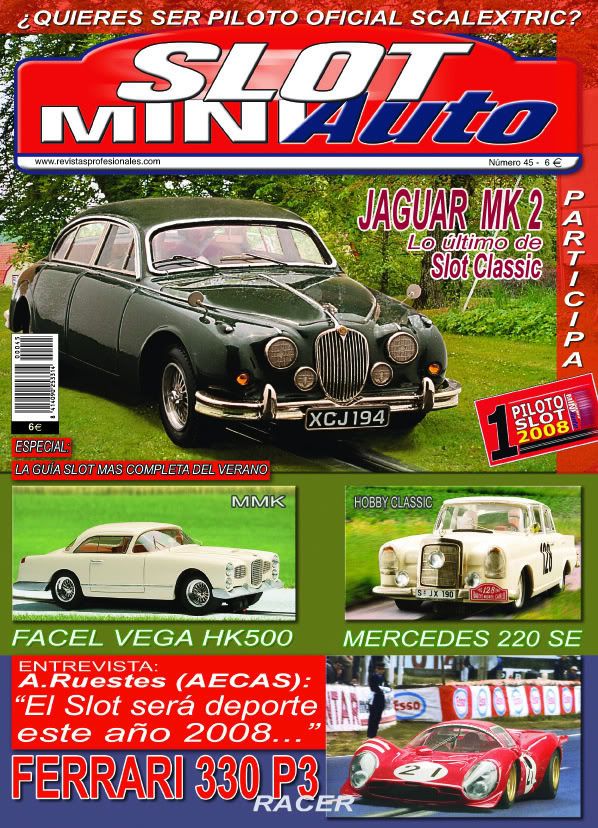 COMUNICADO DE PRENSA SLOT MINIAUTO 45 - JULIO La revista Slot MiniAuto del mes de Julio, presenta en su portada cuatro modelos muy especiales. No son coches realizados en grandes series pero si grandes reproducciones en resina. Destacado, el Jaguar MkII de Slot Classic, la última referencia de este fabricante español. También merecen un lugar predominante el Facel Vega HK500 de MMK y el Mercedes Benz 220 SE de Hobby Classic. Y Finalmente otra obra maestra, el Ferrari 330 P3 de Racer. Todos ellos, coches y fabricantes, permiten recuperar la memoria histórica del automovilismo con sus ediciones limitadas. Una explosiva entrevista con Alex Ruestes, organizador del Slot Meeting y Presidente de AECAS subirá la temperatura a este verano. En el interior, la prueba del Porsche 908 en escala 1:24 de Cursa Models, y una esperada comparativa sobre la eterna discusión: 45º o 90º. Además mostramos una preparación extrema del C4 WRC de Ninco. Adelantamos también en primicia las primeras fotos del Nissan 350Z de Power Slot. Por último, si quieres ser Piloto Oficial Scalextric en el 2009, no te pierdas esta próxima revista.
COMUNICADO DE PRENSA SLOT MINIAUTO 45 - JULIO La revista Slot MiniAuto del mes de Julio, presenta en su portada cuatro modelos muy especiales. No son coches realizados en grandes series pero si grandes reproducciones en resina. Destacado, el Jaguar MkII de Slot Classic, la última referencia de este fabricante español. También merecen un lugar predominante el Facel Vega HK500 de MMK y el Mercedes Benz 220 SE de Hobby Classic. Y Finalmente otra obra maestra, el Ferrari 330 P3 de Racer. Todos ellos, coches y fabricantes, permiten recuperar la memoria histórica del automovilismo con sus ediciones limitadas. Una explosiva entrevista con Alex Ruestes, organizador del Slot Meeting y Presidente de AECAS subirá la temperatura a este verano. En el interior, la prueba del Porsche 908 en escala 1:24 de Cursa Models, y una esperada comparativa sobre la eterna discusión: 45º o 90º. Además mostramos una preparación extrema del C4 WRC de Ninco. Adelantamos también en primicia las primeras fotos del Nissan 350Z de Power Slot. Por último, si quieres ser Piloto Oficial Scalextric en el 2009, no te pierdas esta próxima revista.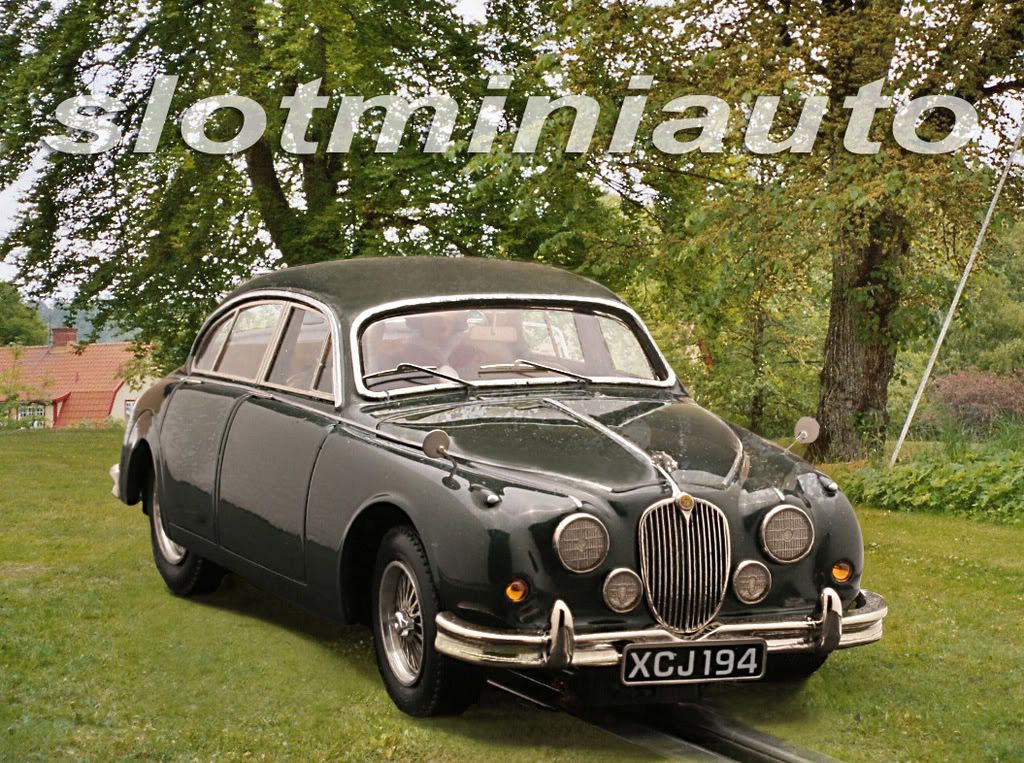
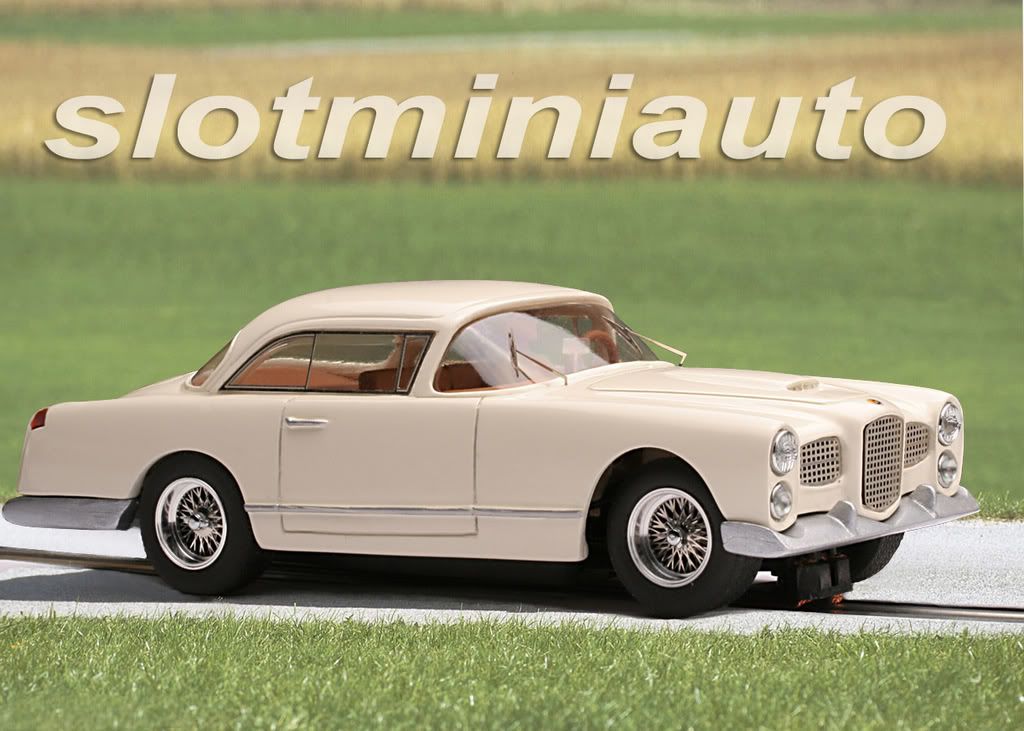
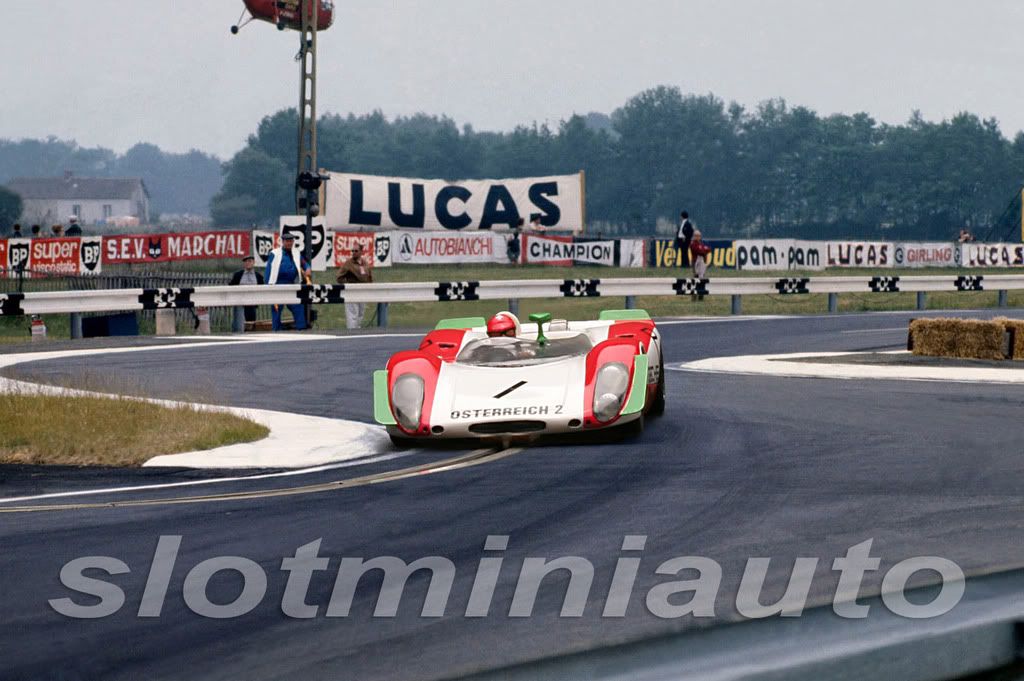
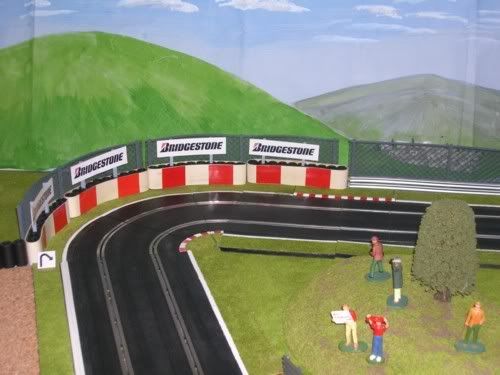 These are strips of thin white rubber which wrap around the tyre walls. Each is long enough to go around two lengths of tyre wall, making a section half a straight long. The front has two red or blue blocks so that the overall effect is very like many circuits.
These are strips of thin white rubber which wrap around the tyre walls. Each is long enough to go around two lengths of tyre wall, making a section half a straight long. The front has two red or blue blocks so that the overall effect is very like many circuits. 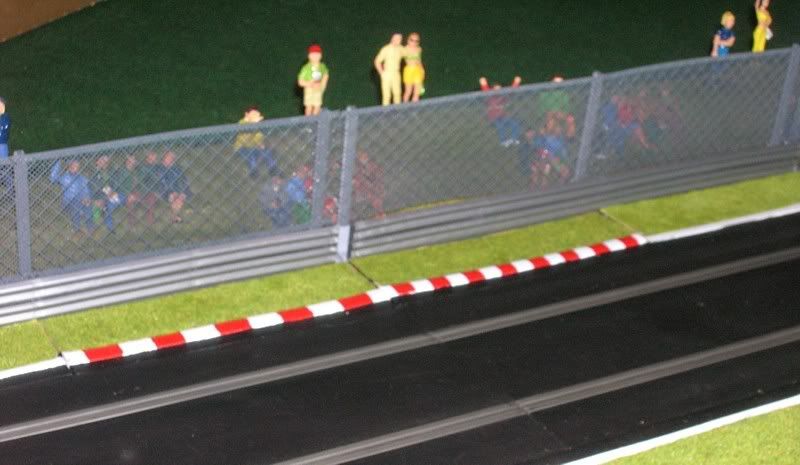 If you watched the Australian Grand Prix this year you can not have failed to notice the amount of safety fencing around the circuit. Australia is not alone in this although, as a ‘street' circuit, it is particularly noticeable there. We have therefore made some Safety Fencing to allow you to reproduce this effect on your own circuits.
If you watched the Australian Grand Prix this year you can not have failed to notice the amount of safety fencing around the circuit. Australia is not alone in this although, as a ‘street' circuit, it is particularly noticeable there. We have therefore made some Safety Fencing to allow you to reproduce this effect on your own circuits. 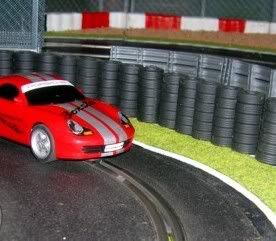 These come in sections of five stacks of tyres with six tyres in each stack. They are injection moulded in synthetic - though extremely realistic - rubber. This means the detail is great and also that they are flexible enough to bend around curves and to flex a little bit if a car runs into them. Our customers tell us that they do actually work in sparing the cars!
These come in sections of five stacks of tyres with six tyres in each stack. They are injection moulded in synthetic - though extremely realistic - rubber. This means the detail is great and also that they are flexible enough to bend around curves and to flex a little bit if a car runs into them. Our customers tell us that they do actually work in sparing the cars! 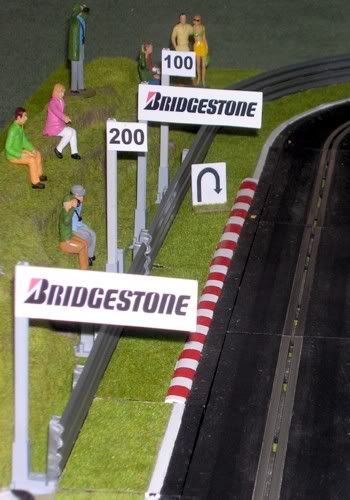 Brake Point markers
Brake Point markers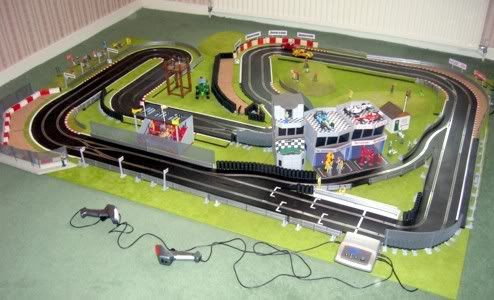
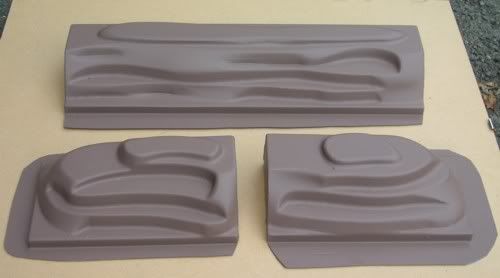
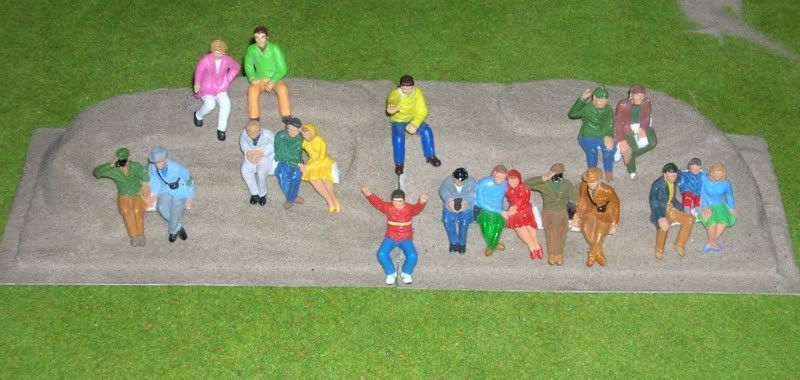
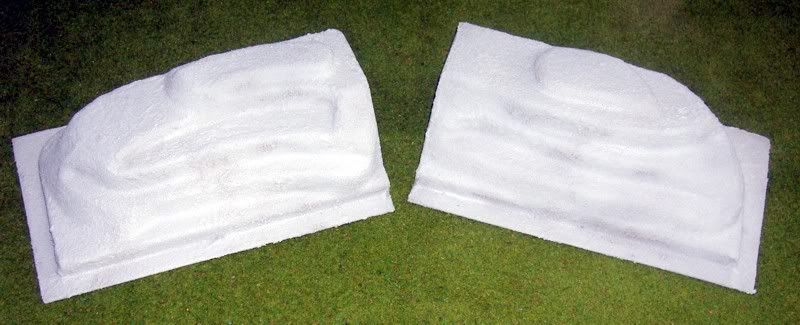
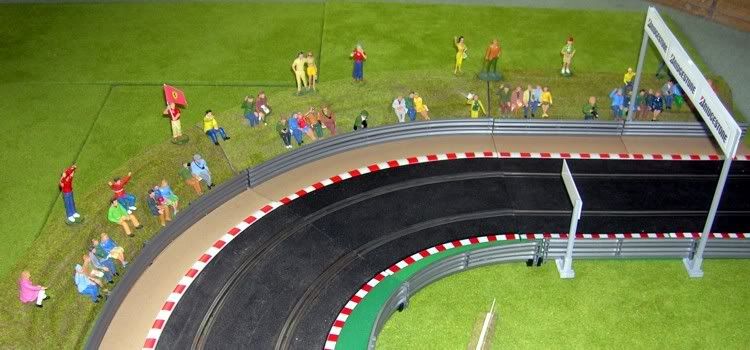
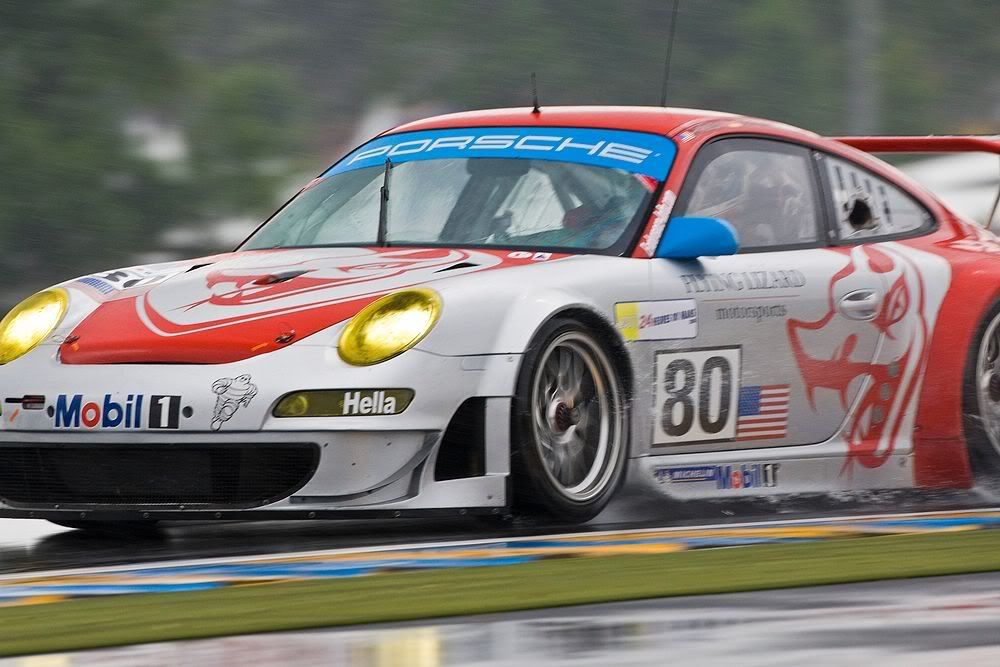 On July 11th at Lime Rock Park during the weekend's American LeMans Series race the Flying Lizard Motorsports Porsche team will have an SCX Digital track set up to race against slot racers! Approximate race times for racing against the drivers are around 1:00 pm to 1:15-1:30pm and again from 4:00pm to about 4:15-4:30. Each session will be about half an hour.
On July 11th at Lime Rock Park during the weekend's American LeMans Series race the Flying Lizard Motorsports Porsche team will have an SCX Digital track set up to race against slot racers! Approximate race times for racing against the drivers are around 1:00 pm to 1:15-1:30pm and again from 4:00pm to about 4:15-4:30. Each session will be about half an hour. 
